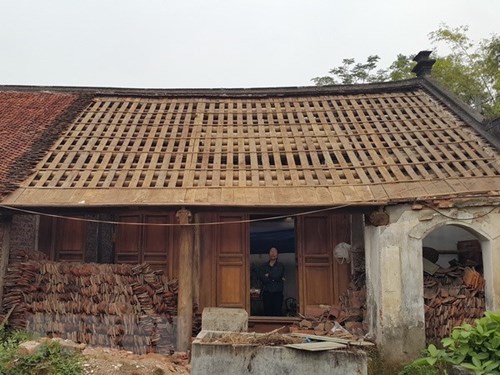The conference was held by the Hanoi Department of Culture and Sports to discuss policies for cultural preservation and development after the Law on the Capital City took effect five years ago.
The thousand-year-old city is home to the country’s largest number of historical relic sites – 5,928, of which thousands are degrading and about 500 are in an alarming state of degradation, according to the department.
    |
 |
|
An old house in Duong Lam Ancient Village on the outskirts of Hanoi is in a bad condition. |
However, most of the funding came from the two sources – the limited budget of local districts and communes and voluntary donations – so it has been far below the amount needed to restore the relics.
There is even a lack of funding required to urgently repair those in danger of collapsing any time, particularly during the current rainy season.
While the city’s inner districts have sufficient funding for relic restoration, many others on the outskirts, especially where a large number of relics are located, have been struggling to budget the cost and to mobilize investment from the private sector, said Le Cam Tu, head of the department’s division of finance and planning.
Few degrading relics received enough funding but they still had to go through a lengthy process of getting approval for restoration projects from authorities. This has caused many difficulties for the district and communal authorities in getting the work done, she noted.
Tu proposed measures to tackle these problems, for example, diversifying the sources of funding which should include investment from the state, the city and the society. For the relics in a very bad condition or at high risk of collapsing, communes and districts should ask for the city’s financial support which may be sourced from its non-business budget, she suggested.
Director of the Center for Scientific and Cultural Activities Van Mieu – Quoc Tu Giam Le Xuan Kieu added that to attract more investment into restoration projects, the city needs to expand social investment and remove barriers for investors.
Hanoi has 1,973 intangible cultural heritage elements and 1,206 traditional festivals, including the Giong Festival of Phu Dong and Soc temples recognized by UNESCO as the Intangible Heritage of Humanity and Ca Tru singing inscribed on the UNESCO List of Intangible Cultural Heritage in Need of Urgent Safeguarding.
Many of these heritage elements are in danger of dying out, like ancient “tuong” singing in Coc Thuong village (Chuong My), “trong quan” folk singing in Khanh Ha (Thuong Tin) and Phuc Lam (Phu Xuyen) and “vi” singing in Ngoc Than and Ham Rong (Quoc Oai).
There is a lack of spaces for the regular practices of the traditional arts largely due to rapid urbanization and social transformation. Meanwhile, most of the artisans are getting older; some have died without passing on their skills down.
The People’s Committees at district and communal levels were urged to develop plans for the preservation of the city’s intangible cultural heritages.
Source: VNA